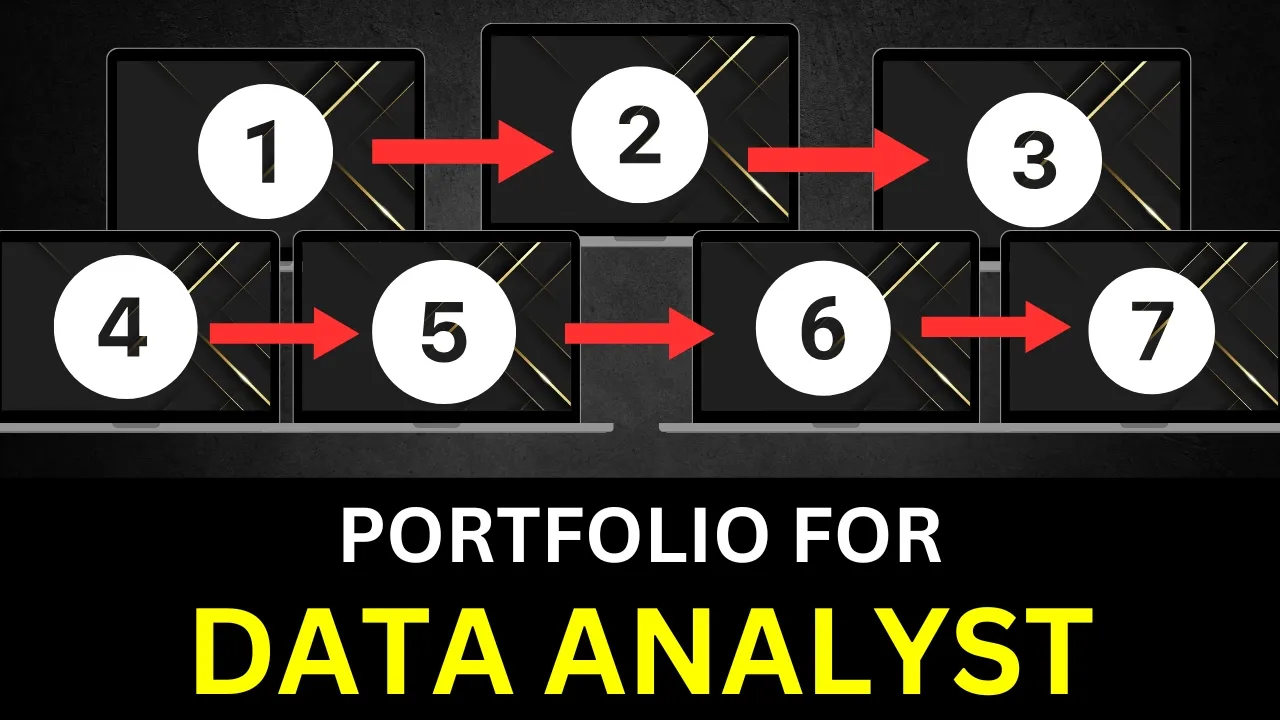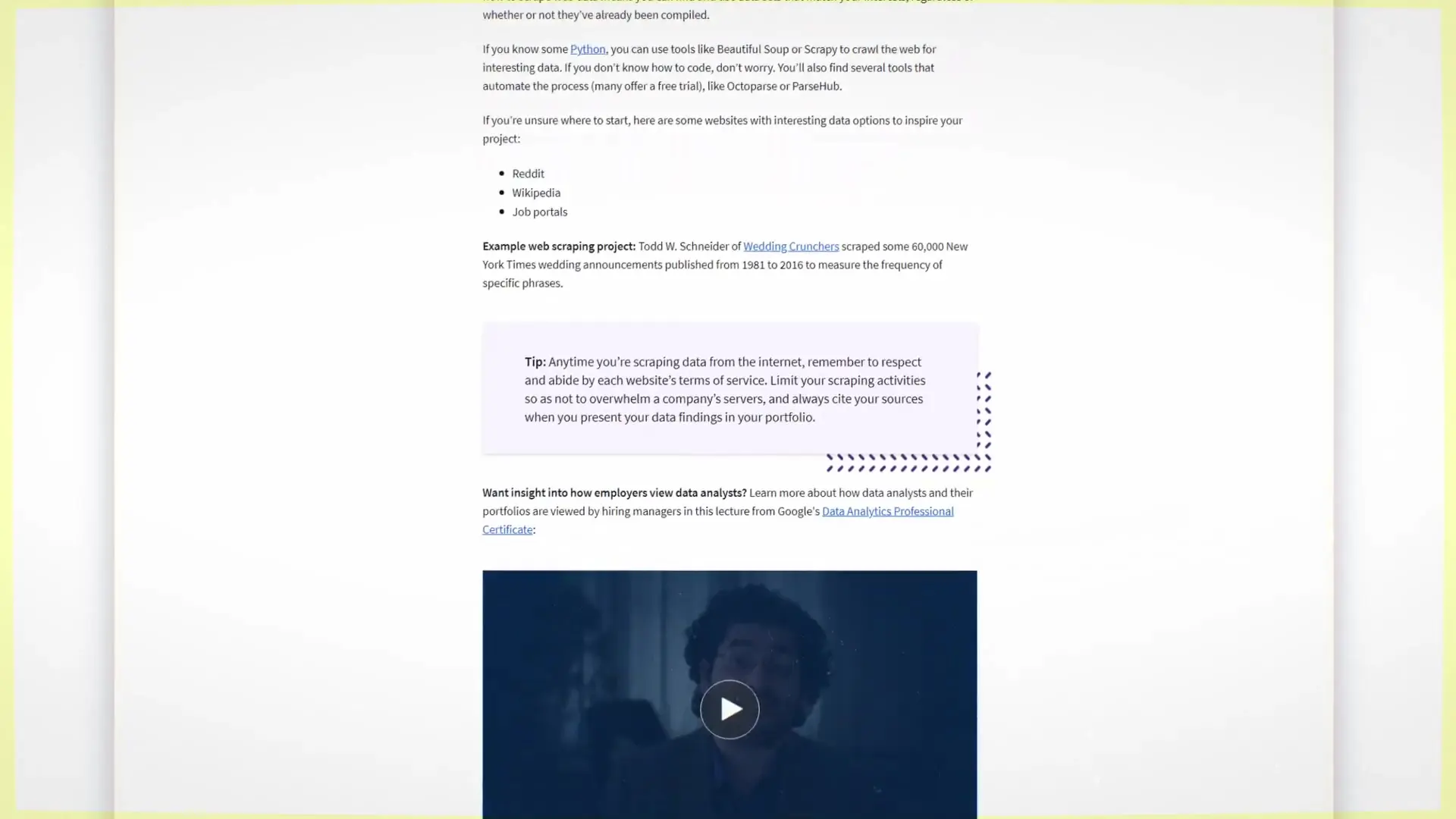
A well-crafted data analyst portfolio is your ticket to landing that dream job in data analytics. However, simply having a collection of projects isn't enough to impress recruiters who review dozens of portfolios daily. To stand out in this competitive field, you need a strategic approach that showcases your technical skills while demonstrating your business acumen and problem-solving abilities.
Key 1: Diversify Your Portfolio Projects
Creating a diverse portfolio is crucial for demonstrating your versatility as a data analyst. Your portfolio should showcase your ability to navigate the entire data science lifecycle—from data collection and cleaning to analysis, visualization, and interpretation.

However, not all projects carry equal weight. While diversity is important, you should strategically focus on projects that highlight your strongest skills and align with the roles you're targeting. Quality always trumps quantity, so it's better to have a few polished projects than many mediocre ones.
Key 2: Focus on Business Context
One of the most common mistakes in data analyst portfolios is creating projects that showcase technical skills without demonstrating business value. Remember that companies hire data analysts to solve real business problems, not just to create fancy visualizations.
Frame your projects around specific business questions such as:
- What factors contribute to customer loyalty?
- How can we optimize our marketing budget based on past performance?
- Which product features drive the most customer satisfaction?
- What patterns can help us predict and prevent customer churn?
For each project in your portfolio, clearly articulate the business problem, your analytical approach, and most importantly, the actionable insights your analysis provided. This demonstrates that you understand how data analysis translates to business value—a skill employers prize highly.
Key 3: Create Purposeful Visualizations
Visualizations are often the first elements recruiters notice in your portfolio. Every chart, graph, or dashboard should serve a clear purpose and tell a compelling story. Avoid creating visualizations just because they look impressive—focus instead on how they communicate insights effectively.
When developing visualizations for your portfolio, ask yourself:
- What specific insight does this visualization convey?
- Is this the most effective way to present this particular data?
- Would a simpler visualization communicate the point more clearly?
- How does this visualization help answer the business question?
Remember that not all data needs to be visualized. Part of demonstrating your expertise is showing that you can prioritize which insights deserve visual representation and which are better communicated through other means.
Key 4: Document Your Work Thoroughly
Clear documentation is non-negotiable for a professional data analyst portfolio. In real-world settings, you'll rarely work in isolation—your code and analysis will be reviewed and potentially built upon by colleagues. Poorly documented projects signal to recruiters that you may struggle to collaborate effectively.

For each project in your portfolio:
- Write clean, well-commented code that others can easily follow
- Include a detailed README file explaining the project's purpose, data sources, and methodology
- Document your data cleaning and transformation steps
- Explain your analytical choices and their implications
- Provide clear instructions for running or replicating your analysis
Platforms like GitHub are ideal for hosting your portfolio projects, as they provide version control and make it easy for recruiters to review your code. A well-documented GitHub repository demonstrates both your technical skills and your professional approach to data work.
Key 5: Quality Over Quantity
Many aspiring data analysts feel pressured to create numerous projects, but this approach often leads to a portfolio of shallow, unpolished work. Recruiters would rather see a few high-quality projects that demonstrate depth of analysis and attention to detail than many superficial ones.
Focus on creating 3-5 exceptional projects that:
- Showcase different aspects of your data skills
- Align with your interests and career goals
- Demonstrate your unique approach to problem-solving
- Include personalized elements that make them stand out
Even if you start with commonly used datasets or project ideas, add your unique perspective or methodology to make them your own. This personalization not only makes your portfolio more distinctive but also gives you compelling talking points for interviews.
Key 6: Showcase In-Demand Technical Skills
Not all data skills carry equal weight in the job market. Your portfolio should highlight the technical competencies that employers value most, such as SQL, Python, R, Excel, Power BI, or Tableau. Research job postings in your target area to identify which skills are most in demand.
You can approach skill demonstration in two ways:
- Create specialized projects that showcase one primary skill (e.g., a SQL-focused data cleaning project)
- Develop comprehensive projects that integrate multiple tools in their appropriate contexts (e.g., using SQL for data extraction, Python for analysis, and Tableau for visualization)
If you choose the integrated approach, ensure you're using each tool for its strengths. For example, don't use Excel to process massive datasets when Python would be more appropriate, or don't create complex visualizations in SQL when Tableau would be better suited for the task.
Key 7: Share and Promote Your Portfolio
Even the most impressive portfolio won't help your career if no one sees it. The final—and often overlooked—step is to actively share and promote your work. Your portfolio should be easily accessible to potential employers and part of your professional brand.

Effective ways to promote your data analyst portfolio include:
- Adding your portfolio link to your resume and LinkedIn profile
- Writing articles about your projects on platforms like Medium
- Sharing project insights and learnings on LinkedIn and Twitter
- Participating in data communities and forums where you can showcase your work
- Creating a personal website that highlights your portfolio projects
Regular activity related to data analytics on professional platforms signals to recruiters that you're genuinely passionate about the field. Consider posting weekly updates about what you're learning or working on, even if it's just a small insight or technique you've discovered.
Building a Portfolio That Gets You Hired
Creating an effective data analyst portfolio isn't about following a rigid formula—it's about strategically showcasing your skills, problem-solving abilities, and business acumen in a way that resonates with potential employers. By implementing these seven key strategies, you'll develop a portfolio that not only demonstrates your technical capabilities but also communicates your value as a data professional.
Remember that your portfolio is a living document that should evolve as you grow professionally. Regularly update it with new projects, refine existing ones, and align it with your career goals. With a thoughtfully crafted portfolio that follows these principles, you'll significantly increase your chances of landing interviews and securing your ideal data analyst position.
Let's Watch!
7 Essential Steps to Build a Job-Ready Data Analyst Portfolio
Ready to enhance your neural network?
Access our quantum knowledge cores and upgrade your programming abilities.
Initialize Training Sequence